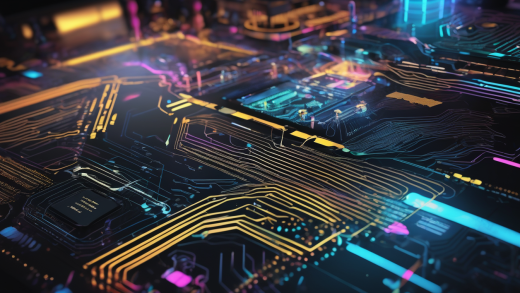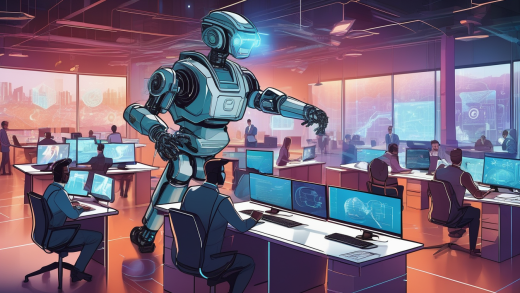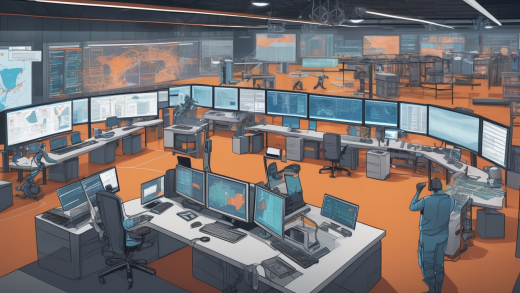Artificial Intelligence (AI) is not just a buzzword; it is a game-changer in the realm of urban planning and the creation of smart cities. Imagine a city where traffic flows smoothly, energy is used efficiently, and public services are tailored to meet the needs of its residents. This is not a distant dream but a reality that AI is helping to shape right now. By leveraging vast amounts of data, AI enables urban planners to make informed decisions that enhance the quality of life for city dwellers.
One of the most exciting aspects of AI in urban planning is its ability to optimize land use. Traditional methods often rely on outdated data and subjective judgments, but AI can analyze current trends, predict future developments, and suggest the best use of land. This means that cities can become more sustainable and livable, ensuring that green spaces, residential areas, and commercial zones coexist harmoniously.
Moreover, AI plays a crucial role in developing smart infrastructure. From intelligent traffic management systems to energy-efficient buildings, AI technologies are transforming how cities operate. For instance, AI can enhance public transportation by predicting demand and optimizing routes. This not only reduces congestion but also ensures that residents have access to reliable transit options.
However, the integration of AI in urban planning is not without its challenges. Issues such as data privacy, the digital divide, and the need for updated infrastructure to support autonomous vehicles must be addressed. As we move forward, it is essential to engage communities in the planning process, ensuring that their voices are heard and their needs are met. Ultimately, the goal is to create urban environments that are not only smart but also inclusive and responsive to the needs of all residents.
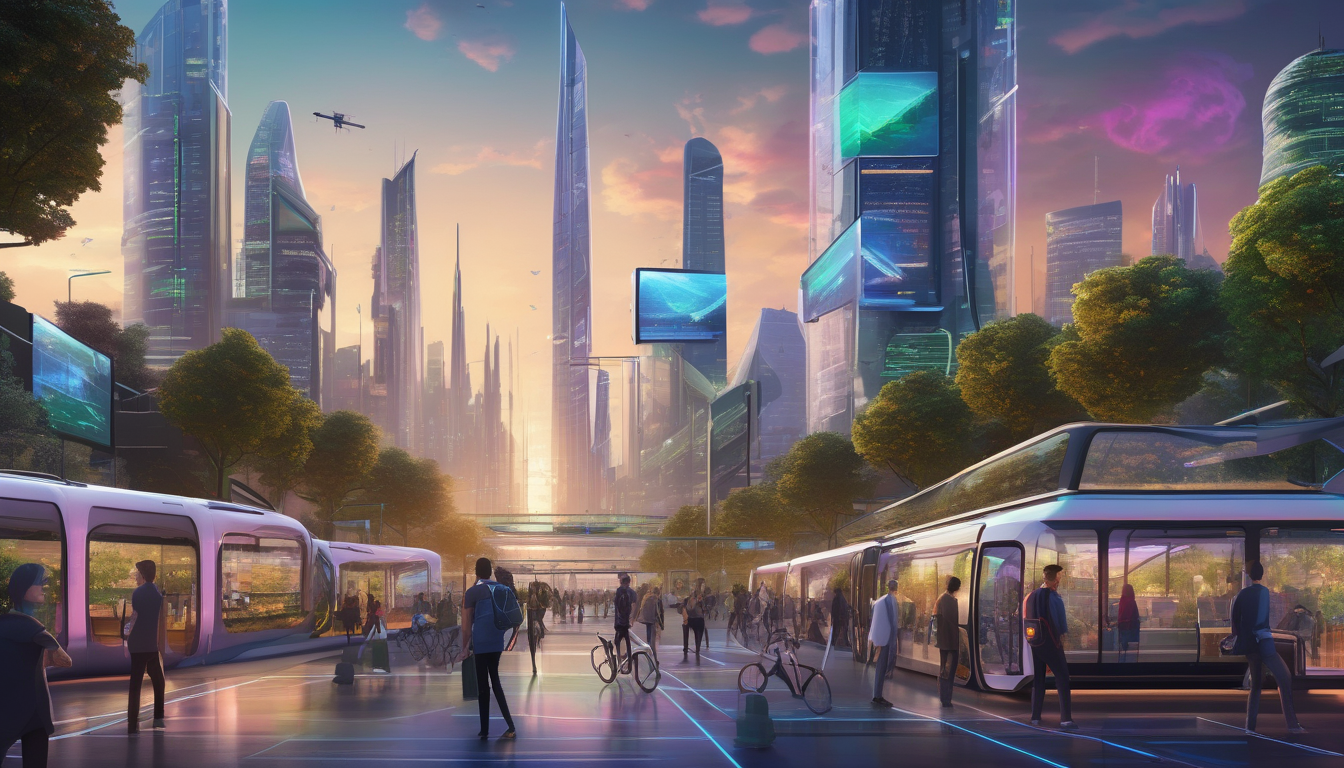
AI in Urban Design
Artificial intelligence is revolutionizing urban design in ways we could only dream of a few years ago. Imagine a city where every building, park, and street is meticulously planned based on real-time data and predictive analytics. This transformation is not just a fantasy; it’s happening right now! By enabling data-driven decisions, AI is optimizing land use and enhancing the aesthetics of urban environments, ultimately leading to more sustainable and livable cities.
One of the most exciting aspects of AI in urban design is its ability to analyze vast amounts of data. Planners can now utilize AI algorithms to assess various factors such as population density, traffic patterns, and environmental impact. This means urban spaces can be tailored to meet the needs of their inhabitants. For instance, if a neighborhood is experiencing a surge in residents, AI can suggest adding parks or community centers to enhance the quality of life.
Moreover, AI helps in creating designs that are not only functional but also visually appealing. By leveraging machine learning, architects can experiment with different designs and materials, leading to innovative structures that blend seamlessly with their surroundings. Imagine walking through a city where each building tells a story, crafted through the lens of advanced technology. This is the future of urban design!
However, it’s important to recognize the challenges that come with this technological shift. Issues such as data privacy, the digital divide, and the need for interdisciplinary collaboration must be addressed. As we embrace AI, we must also ensure that it serves all communities, not just a select few. The goal is to create an inclusive urban environment where everyone can thrive.
In conclusion, AI is not just a tool; it’s a game-changer for urban design. By harnessing its potential, we can build cities that are not only smart but also beautiful and sustainable. The future of urban living is bright, and AI is leading the way!
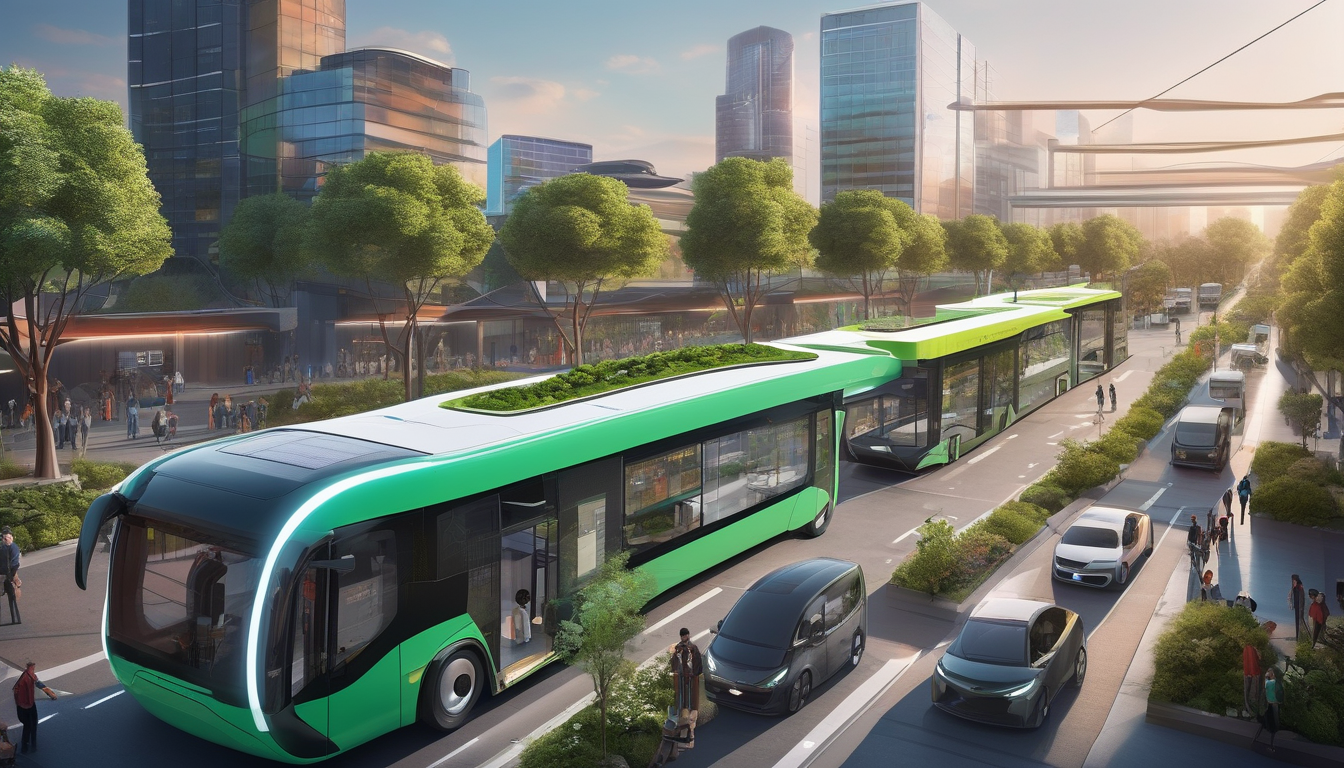
Smart Infrastructure Development
Artificial intelligence (AI) technologies are becoming the backbone of smart infrastructure, driving innovation and efficiency in urban environments. Imagine a city where traffic flows seamlessly, utilities are managed intelligently, and public services are optimized for the best user experience. This is not just a dream; it’s the reality that AI is helping to create. By integrating AI into various urban systems, cities can achieve greater functionality and sustainability.
One of the most significant impacts of AI in urban infrastructure is its role in transportation systems. AI algorithms analyze vast amounts of data to predict traffic patterns and optimize routes, effectively reducing congestion. For instance, cities can implement smart traffic signals that adjust in real-time based on current traffic conditions, ensuring that vehicles move smoothly through intersections. This not only saves time but also reduces emissions, contributing to a cleaner environment.
In addition to transportation, AI plays a crucial role in energy management. By utilizing smart grids and AI-driven analytics, cities can monitor energy consumption patterns and integrate renewable energy sources more effectively. This leads to significant energy savings and a reduction in carbon footprints. For example, AI can help manage energy loads during peak hours, ensuring that resources are used efficiently and sustainably.
Another area where AI shines is in waste reduction. Smart waste management systems equipped with AI can optimize collection routes and schedules based on real-time data. This not only decreases operational costs but also minimizes environmental impact. By analyzing data on waste generation, cities can implement recycling programs tailored to community needs, fostering a culture of sustainability.
In summary, the integration of AI into smart infrastructure development is paving the way for cities that are not only more efficient but also more responsive to the needs of their residents. With ongoing advancements in technology, the future of urban living looks promising, as AI continues to shape our cities into smarter, more sustainable spaces.
Transportation Optimization
In the bustling landscape of modern cities, has become a game-changer, thanks to the power of artificial intelligence. Imagine a world where your daily commute is smooth, predictable, and efficient. AI algorithms are stepping in to make this vision a reality. By analyzing vast amounts of data from various sources, these algorithms can predict public transportation demand with remarkable accuracy, allowing cities to adjust their services dynamically.
For instance, consider a city that experiences peak traffic during rush hours. AI can analyze real-time data and historical patterns to optimize routes, ensuring that buses and trains are deployed where they are needed most. This not only reduces wait times but also minimizes congestion, making the urban environment more pleasant for everyone. It’s like having a personal traffic conductor, orchestrating the flow of vehicles and passengers.
Moreover, AI is not just about improving existing public transport systems; it’s also about enhancing the overall experience for users. With features like real-time tracking and personalized notifications, commuters can plan their journeys more effectively. This technology empowers passengers to make informed decisions, whether it’s catching an earlier bus or choosing a less crowded train. Imagine receiving a notification on your phone that your bus is just around the corner or that an alternative route is significantly faster. This level of convenience can transform the way people view public transportation.
However, the journey towards optimized transportation isn’t without challenges. Cities must invest in the necessary infrastructure to support these advanced technologies. This includes upgrading traffic signals, implementing smart sensors, and ensuring that data privacy is maintained. The integration of autonomous vehicles into public transport systems also raises questions about safety and regulatory measures. As we navigate these hurdles, the potential benefits of AI-driven transportation optimization are too significant to ignore.
Autonomous Vehicles
As we embark on the journey of transforming our cities, (AVs) are leading the charge. These self-driving marvels are not just a futuristic dream; they are becoming a reality, reshaping urban landscapes and mobility. Imagine a world where traffic jams are a thing of the past, and your car knows the best route before you even step inside. Sounds like magic, right? But it’s all about the data and intelligence that powers these vehicles.
However, the rise of AVs brings a mix of opportunities and challenges. On one hand, they promise to enhance traffic management by reducing congestion through smart routing systems. On the other hand, there are pressing concerns about safety and the need for updated infrastructure. Cities must adapt to accommodate these vehicles, which could mean redesigning roadways and traffic signals to ensure seamless integration.
Consider the implications of AVs on urban safety. While they have the potential to reduce accidents caused by human error, they also raise questions about liability and ethics. For instance, in the event of an accident, who is responsible—the manufacturer, the software developer, or the owner? These are complex issues that urban planners must address as they incorporate AV technology into their designs.
Moreover, the integration of AVs into public transportation systems can lead to innovative solutions. For instance, cities can deploy fleets of autonomous shuttles to connect underserved areas to main transit lines, enhancing accessibility for all residents. This can be particularly beneficial for elderly individuals or those without access to personal vehicles.
In conclusion, while autonomous vehicles hold the promise of transforming urban mobility, they also require careful planning and consideration. As cities evolve to embrace this technology, it is essential to balance innovation with safety and community needs, ensuring that the future of transportation is not only efficient but also equitable.
Public Transit Innovations
In the fast-paced world of urban living, are becoming a game-changer for commuters. Imagine stepping onto a bus that knows exactly when you’ll arrive and adjusts its schedule accordingly! Thanks to AI, this is not just a dream; it’s becoming a reality. The integration of real-time data analysis into public transit systems is transforming how we navigate our cities. With AI, transit authorities can analyze patterns in passenger flow, ensuring that buses and trains are not only timely but also equipped to handle peak demand.
One of the most exciting developments is the use of dynamic scheduling. This means that instead of sticking to a rigid timetable, public transit can adapt in real-time based on current conditions. For instance, if a major event is happening downtown, AI can predict the influx of passengers and adjust service levels accordingly. This flexibility not only enhances the user experience but also makes public transport more appealing to those who might otherwise rely on personal vehicles.
Moreover, AI-driven applications are making it easier for riders to plan their journeys. Users can access real-time updates on bus and train arrivals, ensuring they never miss their ride. This convenience is akin to having a personal assistant dedicated to your daily commute. As more people embrace these technologies, the overall efficiency of urban transit systems improves, leading to reduced congestion and lower emissions.
However, implementing these innovations isn’t without challenges. Cities must invest in the necessary infrastructure and technology to support these systems. Additionally, there’s a need for robust data privacy measures to protect user information. As we move forward, the focus will be on striking a balance between innovation and security, ensuring that public transit remains a safe and efficient option for all urban residents.
Energy Efficiency
In today’s world, where every watt counts, has become a crucial focus in urban planning. By incorporating artificial intelligence into city designs, we can unlock significant energy savings that not only reduce costs but also promote sustainability. Imagine a city where energy consumption is optimized in real-time, where buildings automatically adjust their heating and cooling based on occupancy and weather conditions. This is not just a dream; it’s becoming a reality thanks to AI.
AI-driven systems analyze vast amounts of data to make informed decisions about energy use. For instance, smart grids can manage electricity distribution more effectively, integrating renewable energy sources like solar and wind power seamlessly. This leads to a reduction in reliance on fossil fuels, contributing to a cleaner environment. Smart buildings equipped with AI can detect energy waste and suggest improvements, ensuring that every kilowatt is used wisely.
Furthermore, the integration of AI in urban planning allows for the creation of energy-efficient transportation systems. Electric vehicles can be charged during off-peak hours, and traffic flow can be optimized to reduce fuel consumption. This holistic approach not only enhances the functionality of urban environments but also fosters a culture of sustainability among residents.
To illustrate the impact of AI on energy efficiency, consider the following table:
| AI Application | Benefit |
|---|---|
| Smart Grids | Real-time energy management |
| Building Automation | Reduced energy waste |
| Traffic Management | Lower fuel consumption |
In conclusion, the role of AI in enhancing energy efficiency cannot be overstated. By leveraging advanced technologies, cities can not only meet their energy needs but also pave the way for a sustainable future. As urban planners embrace these innovations, we can expect to see cities that are not just smart but also environmentally responsible.
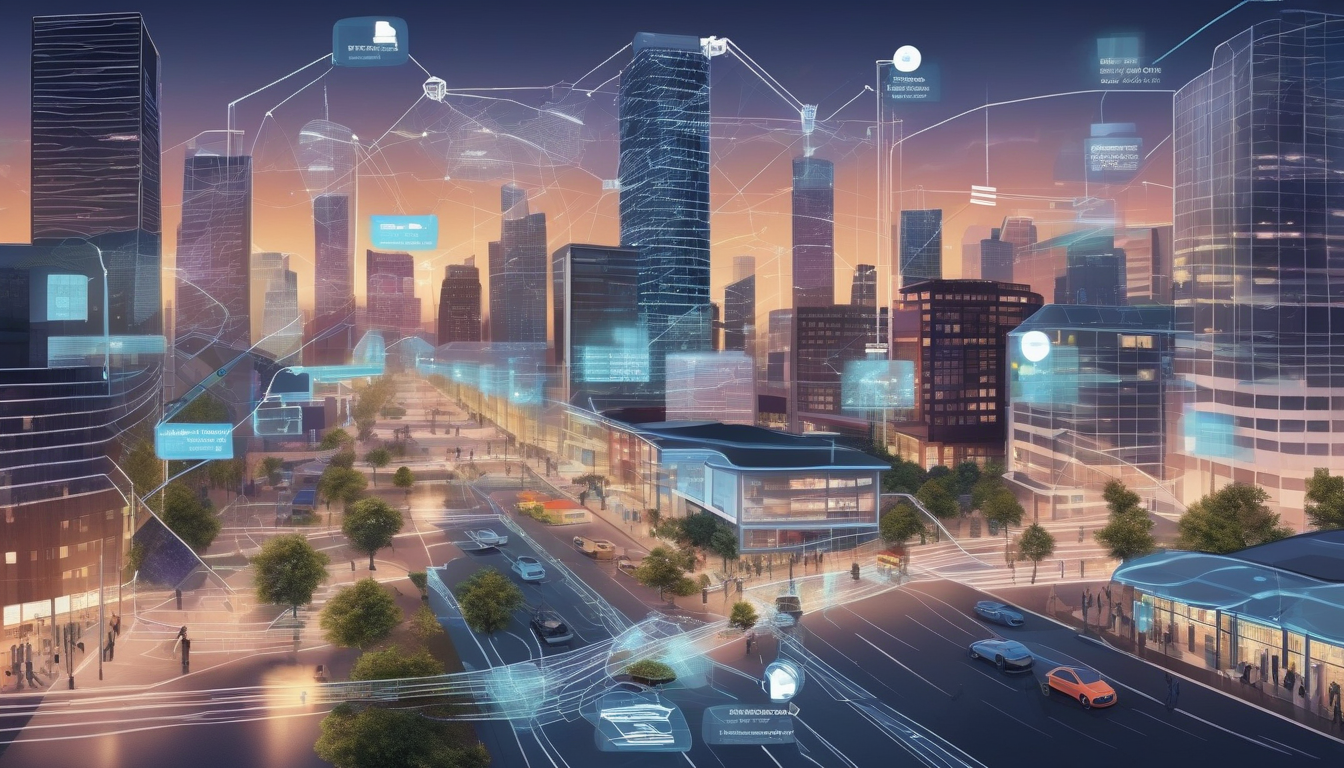
Data-Driven Decision Making
In today’s fast-paced urban environments, has become a game-changer for urban planners. With the integration of artificial intelligence, cities can now harness the immense power of big data to make informed choices that shape their future. Imagine having the ability to analyze vast amounts of information about population trends, traffic patterns, and even environmental impacts—this is precisely what AI brings to the table.
One of the most exciting aspects of this technology is its capability to provide insights that were previously unattainable. For instance, planners can utilize AI algorithms to sift through data and identify emerging trends in real-time. This means they can anticipate needs before they arise, allowing for proactive strategies rather than reactive measures. It’s like having a crystal ball that reveals the future of urban living!
Moreover, AI’s role in community engagement cannot be overstated. By analyzing feedback from residents, AI tools ensure that urban planning reflects the actual desires and needs of the community. This collaborative approach not only enhances civic participation but also fosters a sense of ownership among residents. After all, who knows better about a neighborhood than the people who live there?
To illustrate the impact of data-driven decision making, consider the following table that outlines key benefits:
| Benefit | Description |
|---|---|
| Informed Policies | Data analysis leads to policies that are relevant and effective. |
| Resource Allocation | Efficient distribution of resources based on actual needs. |
| Environmental Impact | Understanding and mitigating the environmental footprint of urban development. |
In conclusion, the fusion of AI and data-driven decision making is not just a trend; it’s a necessity for modern urban planning. As cities continue to grow and evolve, leveraging this technology will be crucial to creating sustainable, livable environments for future generations.
Predictive Analytics
Predictive analytics is a game changer in urban planning, acting like a crystal ball that helps planners foresee the future of our cities. By analyzing historical data and identifying trends, urban planners can make informed decisions that shape thriving communities. Imagine being able to predict where the next shopping center should go, or when to build a new school, all before the need arises. This foresight is not just a luxury; it’s becoming a necessity in our rapidly changing world.
One of the most exciting aspects of predictive analytics is its ability to identify potential challenges before they escalate. For instance, urban planners can utilize data to forecast population growth and its impacts on infrastructure. This allows them to proactively address issues such as traffic congestion or inadequate public services. Here are a few examples of how predictive analytics can be utilized:
- Traffic Management: By analyzing traffic patterns, planners can predict peak hours and design better road systems to alleviate congestion.
- Resource Allocation: Predictive models can help allocate resources like water and electricity more efficiently, ensuring sustainability.
- Environmental Impact: By forecasting urban sprawl, planners can implement measures to protect green spaces and biodiversity.
The integration of predictive analytics into urban planning not only enhances efficiency but also boosts community engagement. By sharing predictions with the public, cities can foster discussions around growth and development, ensuring that residents feel heard and involved in the planning process. This collaboration can lead to more tailored urban policies that truly reflect the needs of the community.
In conclusion, as cities continue to evolve, the role of predictive analytics in urban planning will only become more crucial. It empowers planners to make data-driven decisions that can transform urban landscapes, making them more resilient and adaptable to future challenges. The future of urban planning is here, and it’s powered by the insights that predictive analytics provides.
Community Engagement
In today’s fast-paced urban environments, is more crucial than ever. As cities evolve, the voices of residents must be heard and integrated into the planning process. Thanks to artificial intelligence, urban planners can now utilize sophisticated tools that analyze community feedback and preferences, ensuring that development reflects the true needs of the populace.
Imagine a city where every resident feels their opinion matters. AI technologies can collect and process vast amounts of data from surveys, social media, and community forums, turning raw feedback into actionable insights. This not only helps in identifying what residents want but also fosters a sense of ownership and pride among them. When people feel involved, they are more likely to support and participate in local initiatives.
Moreover, AI can facilitate real-time communication between planners and the community. For instance, platforms powered by AI can provide updates on ongoing projects and solicit input on future developments. This two-way communication is essential for building trust and transparency. By making information accessible and engaging, cities can create a more informed citizenry that actively participates in shaping their environment.
To illustrate the impact of AI on community engagement, consider the following table:
| AI Tools | Benefits |
|---|---|
| Sentiment Analysis | Understanding public opinion on urban issues |
| Interactive Surveys | Gathering real-time feedback from residents |
| Data Visualization | Making complex data more understandable for the public |
| Social Media Monitoring | Tracking community sentiment and trends |
In conclusion, leveraging AI for community engagement transforms the way urban planning is approached. It empowers residents, enhances civic participation, and ultimately leads to urban spaces that are not just built for people, but with them. The future of urban planning is bright when communities are at the heart of the conversation.
Frequently Asked Questions
- How is AI changing urban planning?
AI is revolutionizing urban planning by enabling data-driven decisions, optimizing land use, and enhancing the overall aesthetic of cities. This leads to more sustainable and livable environments for everyone.
- What are the benefits of smart infrastructure?
Smart infrastructure powered by AI improves transportation systems, energy management, and waste reduction. This not only enhances the functionality of urban areas but also promotes a healthier and more efficient living space.
- How does AI optimize transportation?
AI algorithms predict demand and optimize public transport routes, which helps reduce congestion and ensures that mobility is both efficient and accessible for all city residents.
- What role do autonomous vehicles play in urban settings?
Autonomous vehicles present exciting opportunities for traffic management and safety, but they also pose challenges that require updated infrastructure to accommodate these new technologies.
- How can AI enhance community engagement?
AI tools analyze community feedback and preferences, ensuring that urban planning reflects the needs of residents. This enhances civic participation and makes urban spaces more inclusive.
- What is predictive analytics in urban planning?
Predictive analytics allows urban planners to forecast growth patterns and potential challenges, enabling proactive strategies that address issues before they escalate into major problems.

